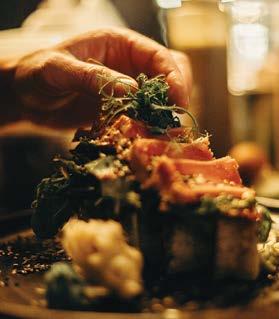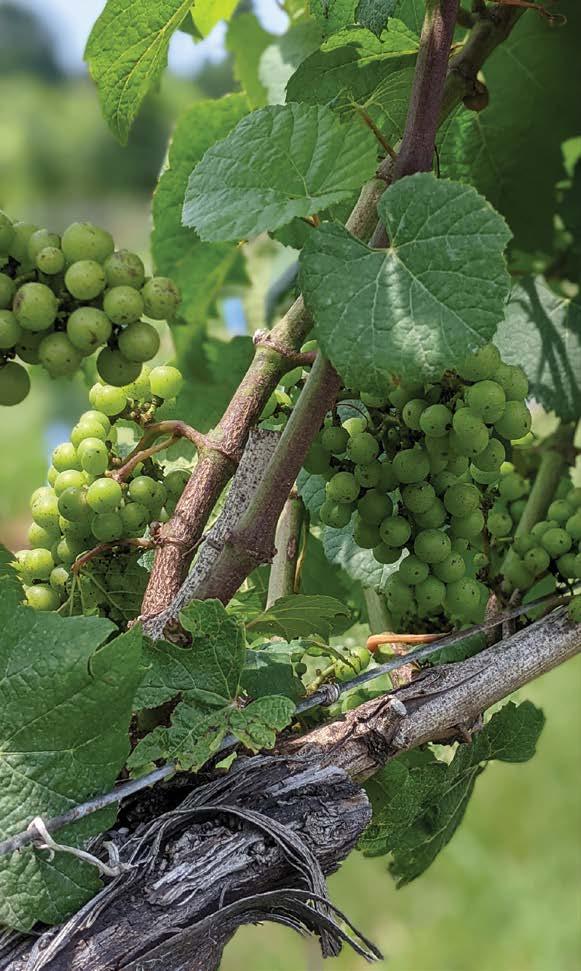
5 minute read
October
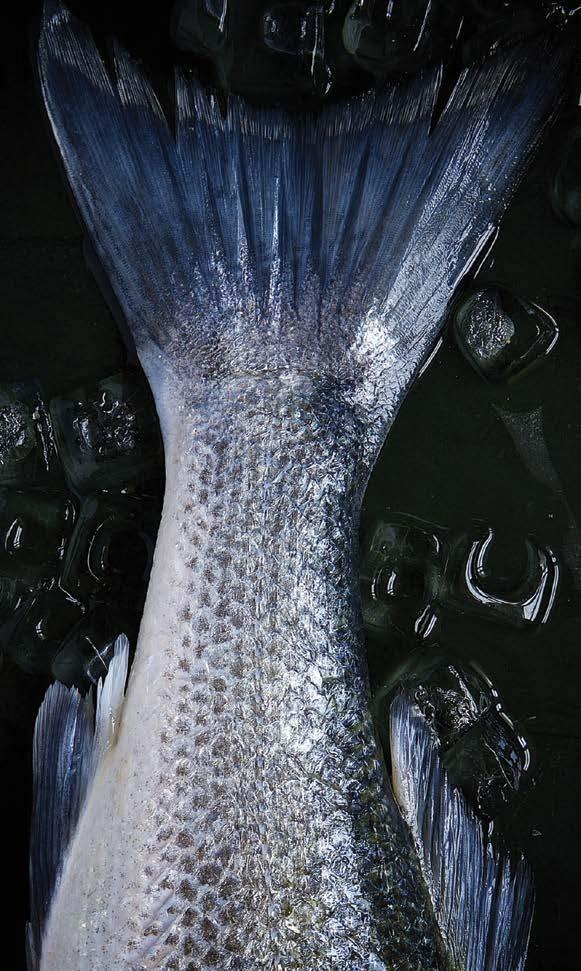
Virginia Wine Month National Seafood Month
Advertisement
While we enjoy the fresh bounty cultivated from vineyards across Virginia and reeled in from local waters all year long, we especially recognize these industries in the month of October.
[ by jill doczi ]
FAR LEFT: JULIE FANNING | LEFT: PIXABAY JULIE FANNING LAKER

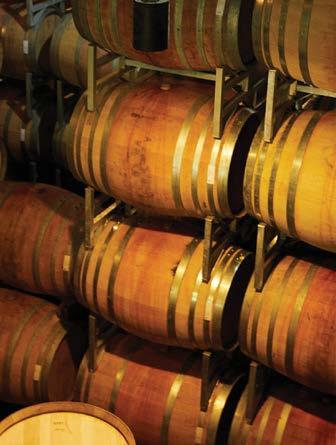
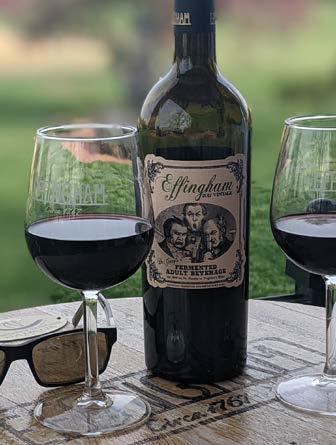
The Norton grape, indigenous to Virginia, has a deep ruby color and characteristics of rich plum and cherry. Virginia is now one of the top 10 wineproducing states in the country and boasts almost 300 wineries.
n celebration of all wines Virginia, we share the history of the original wine of the commonwealth—more than 400 years in the making (see “Virginia’s Heritage” at right). America’s oldest wine grape, Norton, began its history in colonial times and struggled alongside the European settlers to take a foothold in the “New World.” In the early 1600s, English settlers in Virginia attempted to plant vinifera grapes, the same species that they recognized from Europe as producing chardonnay, cabernet and many other varieties. These nonnative species did not adapt well to the commonwealth’s notoriously hot, humid climate and they suffered from disease and pest damage. Even with the support and significant attempts by larger landowners, including Thomas Jefferson and George Washington, the idea of a wine industry faltered and died on the vine. Although Jefferson, in particular, put great effort into establishing a wine industry in Virginia, he didn’t live to see the evolution of his attempts, including the cultivation of native U.S. grapes. Toward the end of Jefferson’s life, Daniel Norton experimented with crossbreeding in his Richmond, VA, lab and discovered a vine that tolerated Virginia soil and growing conditions. Sales of the Norton grapevine, and the subsequent creation of its wine, increased across the U.S., and Europe, even winning gold medals in competitions against established European counterparts. Prohibition halted the progress in its tracks as wine-producing grapevines were destroyed and replaced with sweeter Concord grapes for producing juice. Once Prohibition ended, vineyards moved forward planting the more traditional European grape varieties leaving the Norton grapevine produced exclusively in the U.S. as a memory in the industry. The Virginia wine industry lagged behind other states and only with the introduction of modern agricultural methods and an influx of European talent in the mid-1970s did Virginia wine begin to take hold and prosper. Slowly, all manner of wine businesses emerged throughout Virginia from large-scale commercial outfits to those willing to try their hand at a startup—with all experimenting along the way. The quality of Virginia wine grew along with the pace of new vineyards and tasting rooms. By the 1990s, about 50 wineries called Virginia home, slowly winning awards and recognition. Now with over 300 wineries growing over 4,000 acres in 10 regions, Virginia has established its place in the viniculture world. While Virginia varieties do produce the familiar bottles of chardonnay, merlot and cabernet sauvignon, several wineries have focused on varieties less popular in the European arena like viognier, cabernet franc, petit verdot and red blends. A few winemakers have also begun the task of restoring the
Virginia’s Heritage
Created to commemorate the 400th anniversary of winemaking in Virginia, this full-bodied red blend is a collaboration between 16 wineries across the commonwealth along with the Virginia Tourism Corporation— showcasing Virginia’s expertise in the wine industry and establishing its position as the cradle of winemaking in the Americas. Only 10,000 bottles were produced; each bottle represents one of the 10,000 grapevines brought to Virginia more than 400 years ago.
Norton variety as America’s native grape—beginning with Dennis Horton who, in 1989, purchased a small plot of land in Virginia, determined to bring the Norton vine and its wines back from the dead. Virginia Wine recently announced “the state’s first wine trail”—a mobile passport that brings gold-medal-winning wineries from the 2021 Virginia Governor’s Cup Competition to your mobile device. Through the Virginia Governor’s Cup, the state’s most stringent wine competition, world-class judges award gold medals to just 47 wineries, cideries and meaderies out of over 500 entries. You can sign up at taste.virginiawine.org; when visiting a participating winery, open up the pass, locate its listing and check in via your smartphone’s GPS. After you check into 12 wineries you will receive a free Virginia Wine wine tumbler. Info: www.virginiawine.org/ virginia-wine-month
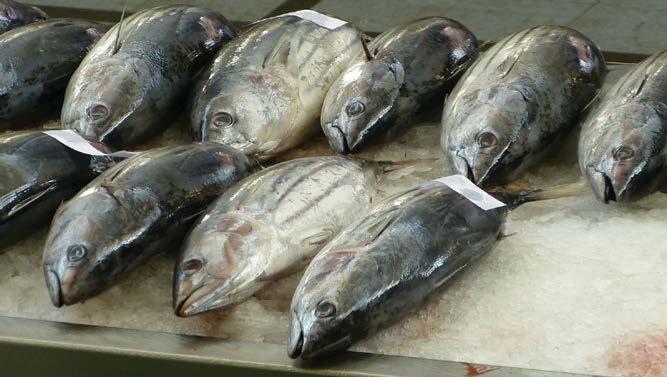
ver 30 years ago Congress declared October National Seafood Month to recognize the large and historical industry in the United States. In the U.S. the seafood industry employs 250,000 and contributes $60 billion to the U.S. economy each year. Although the U.S. leads most other countries in responsibly managed fisheries, the market demand for seafood exceeds sustainable wild harvesting. This has spurred the growth of the aquaculture industry and the technology to farm shellfish (oysters, clams and mussels) and algae (seaweed and kelp) in coastal estuaries, as well as finfish farms, in the ocean. Supporting agencies feel the U.S. can become a global leader in sustainable seafood that is wildcaught and farmed. One support group, the Sensible Seafood program through the Virginia
COTTONBRO
From water to plate: locally caught means fresh cuisine year-round
Aquarium & Marine Science Center, promotes the consumption of native regional seafood species that are both plentiful and harvested using environmentally sound practices. Some species of fish have begun disappearing quickly from our oceans, and while farming has helped some stocks replenish, an estimated 90 percent of the world’s big fish have disappeared from the planet, and 70 percent of the world’s fisheries have become stretched to their limits. Surprisingly some corporations that raise fish in “farms” use methods that harm the environment and produce unhealthy fish. To help consumers make wise choices, the Virginia Aquarium and Marine Science Center created the Sensible Seafood Program in 2008, in partnership with Monterey Bay Aquarium’s Seafood Watch Program. An advisory team of scientists and experts meets annually to discuss scientific evaluations of fish populations and make recommendations. The Sensible Seafood Program shows consumers how to choose wisely through the use of their Sensible Seafood pocket guide and support of Sensible Seafood restaurants, markets and business partners. Learn more about these options with the downloadable Sensible Seafood pocket guide. (www.virginiaaquarium.com/ conserve/Documents/Virginia%20 Seafood%20Guide.pdf) “Local seafood is likely to be fresher than seafood shipped from around the globe, and local purchases reduce your carbon footprint. Local purchases also contribute to the local economy,” said Karen Burns, guest engagement supervisor for the Virginia Aquarium. “Sensible Seafood partners include retail and wholesale seafood sellers, as well as local restaurants, which agree to offer at least one Sensible Seafood selection for savvy consumers. When you visit these businesses or eat at these restaurants, please thank them for supporting this important program. New partners join regularly, so check the website (www.VirginiaAquarium. com) for updates.”
